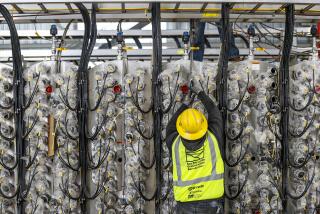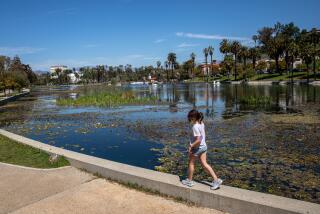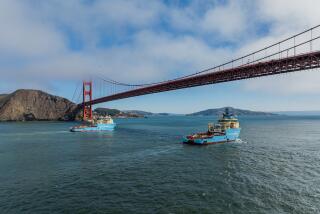EPA aims to put a cap on DDT site
- Share via
The federal Environmental Protection Agency on Thursday proposed spending at least $36 million to clean up the world’s largest deposit of banned pesticide DDT, which lies 200 feet underwater off the Palos Verdes Peninsula.
Montrose Chemical Corp., which was based near Torrance, released 110 tons of DDT and 10 tons of toxic PCBs into the sewers from 1947 through 1971. The chemicals then flowed into the Pacific.
The EPA in 1996 declared about 17 square miles of ocean a Superfund site, ranking it among the most hazardous places in the country.
Officials have blamed the pollution for harming marine life and causing the disappearance of some types of coastal birds. Environmentalists said they are glad the government is finally taking action but doubt the plan will restore the coast to what it was.
Chemical companies, including the now-defunct Montrose, agreed in 2000 to pay a total of $73 million to help restore the ocean environment. An additional $67 million in settlements was paid by 150 Southern California cities that used the sewer system and three companies: Simpson Paper Co., Potlatch Corp. and CBS Corp.
The total settlement of $145 million was one of the largest payments ever in a natural resource case.
The EPA proposal includes placing a cap of silt and sand over the most contaminated 320 acres. This would mark the first time a Superfund site has used this method, said Carmen White, the EPA’s project manager. Work is expected to begin in 2011.
In 2000, the EPA spent $5 million on a pilot project to determine if a cap could successfully be placed on 135 acres of the Superfund site.
White said the experiment showed mixed results. She said that when researchers checked several months later, they found that much of the sediment they were trying to cap was still on top.
“There was much speculation how that happened,” she said. “We don’t know if we know the answer.”
White said one of the problems with such a large area of contaminated sediment is that there are not many options for fixing it. Dredging could cost about $2 billion and contaminate the water, and still leave the problem of how to dispose of such an enormous amount of dirty soil.
The project manager said the EPA would continue studying more effective possible ways to cap the soil.
During the pilot project, the sand was dumped from a barge. Attempts will be made to drop it from a distance closer to the soil, White said.
Mark Gold, executive director of the environmental group Heal the Bay, said the EPA’s plan “isn’t a solution. It’s just a risk reduction for public health and the environment.”
He agreed there was no viable alternative other than capping but supported a choice that the EPA turned down that would have capped 640 acres at a cost of $76 million.
DDT, banned in this country since 1972, was widely used until scientists discovered that it accumulated in fish and animals and humans that eat them. It makes eggshells so thin that unhatched chicks die. Bald eagles, brown pelicans and peregrine falcons were among the birds that nearly disappeared in the 1950s and ‘60s. DDT also can alter sex hormones in fish, birds and other animals.
PCBs, or polychlorinated biphenyls, also accumulate in marine life. PCBs and DDT can cause cancer, reproductive problems and neurological damage, and can suppress the immune system in humans. Breast-fed infants especially are at risk.
White said the DDT is breaking down, but researchers don’t understand why. The cap would be placed on the area with the highest concentration of chemicals.
White said that after these first steps are taken, the EPA would see if there is more that could be done to reduce the level of the chemicals.
The EPA also will monitor white croaker.
Public hearings on the EPA’s plans will take place from June 23 to 25.
--
More to Read
Sign up for Essential California
The most important California stories and recommendations in your inbox every morning.
You may occasionally receive promotional content from the Los Angeles Times.











